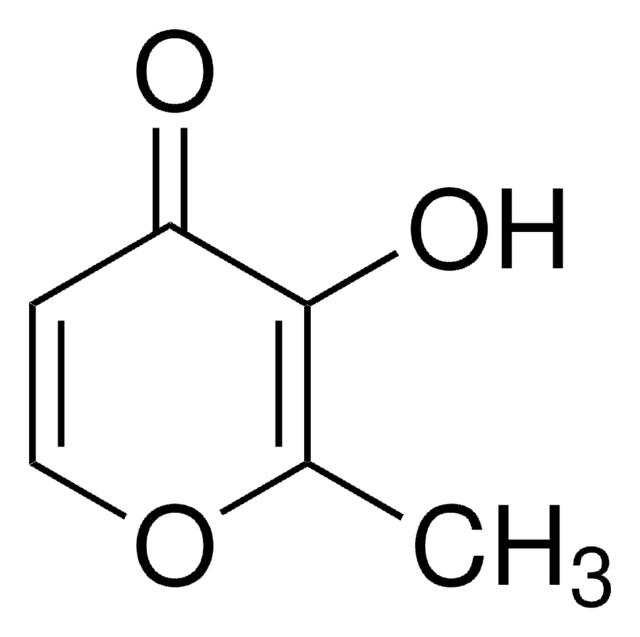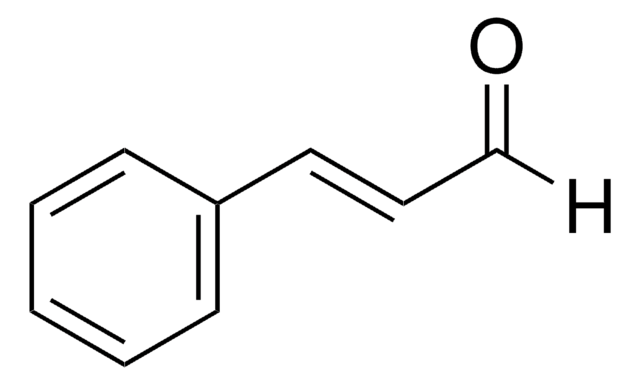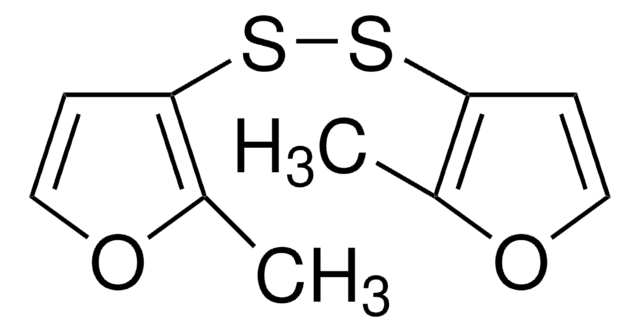W348708
Ethyl maltol
≥99%, FCC, FG
Synonym(s):
2-Ethyl-3-hydroxy-4H-pyran-4-one, Ethyl maltol
About This Item
Recommended Products
biological source
synthetic
Quality Level
grade
FG
Fragrance grade
Halal
Kosher
Agency
follows IFRA guidelines
reg. compliance
EU Regulation 1223/2009
EU Regulation 1334/2008 & 178/2002
FCC
FDA 21 CFR 172.515
Assay
≥99%
mp
85-95 °C (lit.)
application(s)
flavors and fragrances
Documentation
see Safety & Documentation for available documents
food allergen
no known allergens
fragrance allergen
no known allergens
Organoleptic
caramel; sweet
SMILES string
CCC1=C(O)C(=O)C=CO1
InChI
1S/C7H8O3/c1-2-6-7(9)5(8)3-4-10-6/h3-4,9H,2H2,1H3
InChI key
YIKYNHJUKRTCJL-UHFFFAOYSA-N
Looking for similar products? Visit Product Comparison Guide
Application
- Flavoring Agents in E-cigarette Liquids: A Comprehensive Analysis of Multiple Health Risks.: Analyzes health risks associated with various flavoring agents, including ethyl maltol, in e-cigarette liquids, providing critical insights into their potential biochemical interactions and toxicological profiles (Sachdeva et al., 2023).
- Effect of lactic acid bacteria co-fermentation on antioxidant activity and metabolomic profiles of a juice made from wolfberry and longan.: Explores the impact of lactic acid bacteria co-fermentation on beverages containing ethyl maltol, focusing on changes in antioxidant activity and metabolomic profiles which are crucial for understanding its biochemical effects (Zheng et al., 2023).
- Adverse Biophysical Impact of e-Cigarette Flavors on Pulmonary Surfactant.: Investigates the negative effects of e-cigarette flavors, including ethyl maltol, on pulmonary surfactant, highlighting the biochemical implications of inhaling flavored vapors (Goros et al., 2023).
Signal Word
Warning
Hazard Statements
Hazard Classifications
Acute Tox. 4 Oral
Storage Class Code
11 - Combustible Solids
WGK
WGK 3
Flash Point(F)
Not applicable
Flash Point(C)
Not applicable
Personal Protective Equipment
Choose from one of the most recent versions:
Already Own This Product?
Find documentation for the products that you have recently purchased in the Document Library.
Customers Also Viewed
Our team of scientists has experience in all areas of research including Life Science, Material Science, Chemical Synthesis, Chromatography, Analytical and many others.
Contact Technical Service














